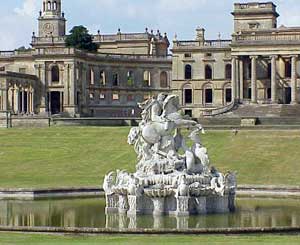Features - Feature
FEBRUARY 11, 2005
What might have been
BY JOE SAWARD

Paul Stoddart located his Formula 1 team (at least for a time) in the unlikely location of Ledbury, a pretty little town in the Malvern Hills well off the beaten track from the usual motor racing haunts.
Paul Stoddart located his Formula 1 team (at least for a time) in the unlikely location of Ledbury, a pretty little town in the Malvern Hills well off the beaten track from the usual motor racing haunts. True, the area boasts the famous Shelsley Walsh hillclimb - which claims to be the oldest motorsport venue using its original course - and nearby is Malvern, the home of the Morgan Motor Company since 1913, but otherwise it is a motor racing desert. It might not have been that way had it not been for local opposition to the idea of building a racing circuit on the grounds of a great country estate which had fallen into ruin. That was the idea of a group of investors several of whom were involved in organising Shelsley Walsh, an event which dates back to 1905. Their dream was to create a permanent racing facility at a time when there were few venues in Britain.
The Witley Court estate could be traced back to the Norman conquest when William the Conqueror granted the land to one of his soldiers Urso d'Abetot. In the three hundred years that followed the manor was passed through a series of families by marriage, ending up in the hands of Sir William Russell in 1499. After the English Civil War the manor passed into the possession of a wealthy merchant called Thomas Foley and his family remained the owners from 1655 to 1837 and the house was enlarged. When the family was forced to sell the 800-acre property it was acquired by the Ward family which enjoyed a vast fortune from coal mining. The property was let to Queen Adelaide, the widow of King William IV, for several years but in 1846 William Ward, the 11th Baron Ward, inherited the estate and began to transform the property into a vast palace with 100 rooms and landscaped gardens. In the late 1800s Witley became one of the great fashionable houses of England, with immense fountains and an imposing facade.
In 1920 the estate was sold to a wealthy carpet manufacturer from Kidderminster called Sir Herbert Smith. Disaster struck in 1937 when the house was burned. There was no money to repair the damage it passed into the hands of a demolition contractor and the fixtures and fittings were stripped out in 1954. The house was left as a ruin and only narrowly avoided being demolished in the early 1950s.
It was in 1955 that the idea emerged of turning the Witley Court estate into a motor racing circuit and a consortium led by a successful Kidderminster racehorse owner called T E Ward (no relation to the Ward Family) and including Murray Austin and William Henry Owen who were active at Shelsley Walsh. Their intention was to try to take the place of Donington Park, which had been an important venue in the 1930s but had fallen into disuse after World War II. It was estimated that the transformation would cost around £40,000 which the syndicate had managed to raise but planning permission proved to be a problem and the idea of a race track, sweeping around the ruins and the landscape gardens and lakes faded into history.
The ruins were placed under a preservation order in 1972 and in 1984 was taken over by English Heritage and for the last 20 years have been undergoing a restoration programme. At the time only Silverstone was a serious venue and even that was a very basic facility.
Witley Court might even have become the centre of the British motor racing industry.